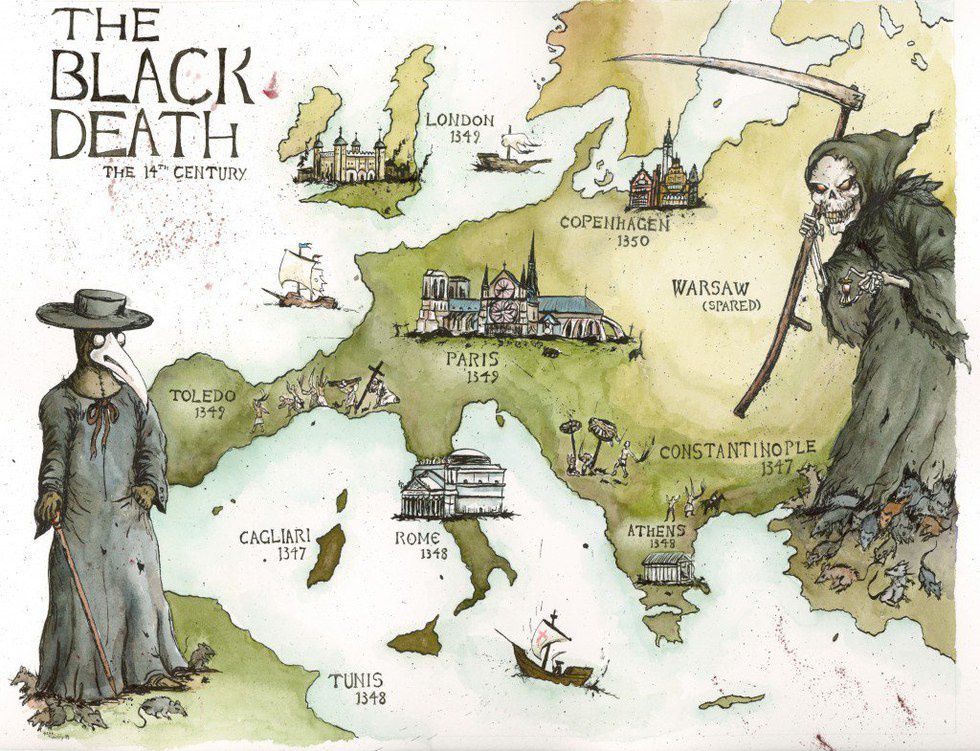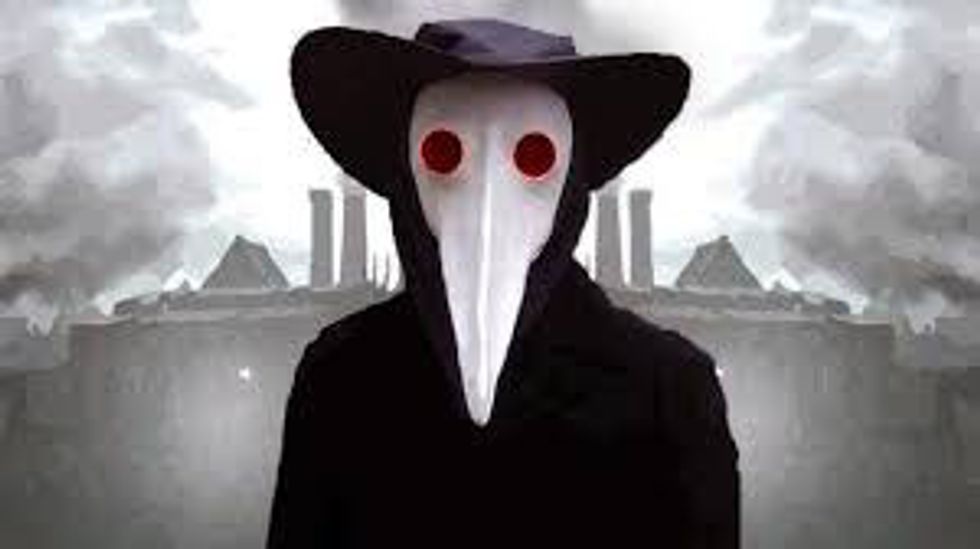Well, you've done it now. You have a stomach ache from eating all of the Halloween candy. I guess it's time to see the doctor. You say you can't move? No need to fret, just call the doctor and request a house call. Your doorbell alerts you and you slowly make your way to the door handle and open it. As you slowly open the door you see a tall, dark and mysterious figure with a bird beak mask and cane. The stranger asks "Someone called for the doctor?", and you're struct with fear. If you didn't know this you called a plague doctor. No need to be alarmed plague doctors aren't really needed anymore in this millennia. "But wait what on earth is a plague doctor?" you ask. Ah my dear friend, let me teach you.
Brief History
Back in the mid sixth century as the first epidemic of the Bubonic Plague aka The Black Death occurred many men, women and children were dying and needed medical treatment and couldn't afford it. Not to mention there wasn't a good wide spread of medical experts to go all around Europe. This continued into the fourteenth century. So the next best thing were the plague doctors, they would treat victims of the towns who were suffering. It didn't matter by the salary, they treated everyone: both the wealthy and the poor.
Methods of work
Since plague doctors became witnesses to numerous deaths during times of plague epidemics they frequently requested autopsies to help determine the cause of death and how the plague played a role in it. They gave advice to their patients about their conduct before death which varied depending on the patient, and after the Middle Ages the nature of the relationship between doctor and patient was governed by an increasingly complex ethical code.
Plague doctors practiced bloodletting and other remedies such as putting frogs or leeches on the buboes to "re-balance the humors" as a normal routine.
However, some plague doctors were known for charging patients and their families extra for special treatments and or false cures. The reason why is because they were not normally professionally trained experienced physicians or surgeons, and often were second-rate doctors unable to otherwise run a successful medical business. Some plague doctors were only young physicians trying to establish themselves. This meant that anyone could have been a plague doctor, your mother, your father, your neighbor, a mail man, a fruit salesman, a fish monger, even the local town drunk could have been a plague doctor if they really wanted to. This meant that these doctors were not experienced and rarely cured their patients due to that reason. Also they got a count of the number of people contaminated for demographic purposes.
Plague doctors by their covenant treated plague patients and were known as municipal or "community plague doctors", whereas "general practitioners" were separate doctors and both might be in the same European city at the same time. In France and the Netherlands plague doctors often lacked medical training too, and were referred to as "empirics". Plague doctors could not generally interact with the public because of the nature of their business and the possibility of spreading the disease; they could also be subject to quarantine which is ironic because they were classified as public servants.
Costume
The plague doctor's wardrobe is very important, it's not designed to scare the patient for dear life, it's designed to protect them from airborne diseases. These articles of clothing was invented by Charles de Lorme in 1619; they were first used in Paris, but later spread to be used throughout Europe.
The garments of the costume consists of a heavy waxed fabric, ankle length overcoat, gloves, boots, a brim hat which were made from waxed leather, a cane to examine and direct patients without the need to make direct contact, an outer over-clothing garment, and a bird-like beak mask with spectacles often filled with strong smelling substances. Some of these fragrant materials include:
- Juniper berry
- Ambergris
- Lemon Balm
- Mint
- Leaves
- Camphor
- Cloves
- Carnations
- Straw
- Laudanum
- Myrrh
- Rose petals
- Lavender
- Styrax
The purpose of the mask was to keep away bad smells, This method was thought to protect the doctor from miasma. Due to the primitive understanding of disease at time, it was believed this suit would sufficiently protect the doctor from this "miasma" while tending to patients. The doctors believed the herbs would counter the "evil" smells of the plague and prevent them from becoming infected. When you come to think, this outfit was modeled after a soldier's amour.
Famous Plague Doctors
Besides Charles de Lorme, there are other well known and notable plague doctors of the time.
- Giovanni de Ventura who was well known in the Italian city of Pavia who contracted as a community plague doctor
- Niall Ó Glacáin who was well known to travel from Ireland, who then earned deep respect in Spain, France and Italy for his bravery in treating numerous victims of the plague
- Ambroise Paré and Paracelsus who were French anatomists were also famous medieval plague doctors that worked together.
- Nostradamus who advice was the removal of infected corpses, getting fresh air, drinking clean water, and drinking a juice preparation of rose hips. In Traité des fardemens it shows in Part A Chapter VIII that Nostradamus also recommended not to bleed the patient.
- Plague Knight who is plague doctor but also a knight, you can fight against him or play as him in the Nintendo game Shovel Knight
I hope this has educated you, so there's no need to be afraid, you won't even feel a thing. Just sit back, relax, and let the good doctor do their work.
























